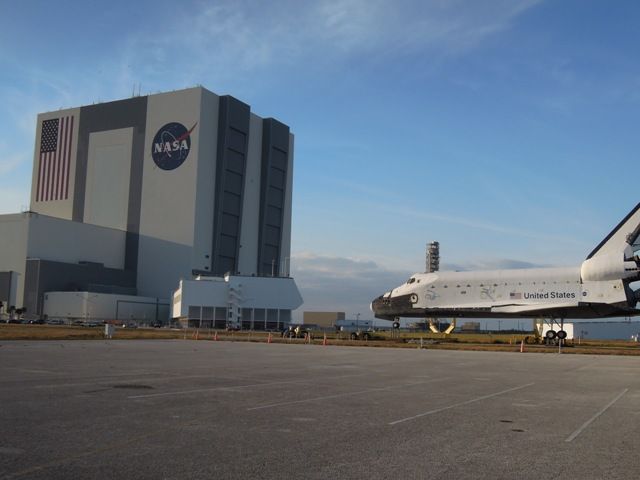Many of you probably saw in the news that today, Monday, February 20th, is the 50th anniversary of John Glenn’s flight into space. The flight was aboard a Mercury-Atlas rocket dubbed Friendship 7. This historic event was a significant step on the way to the Apollo missions to the moon.
By good fortune the NASA contractors at Kennedy Space Center had scheduled an AFT training class last week, and I traveled to Florida to teach the class. I took some time to tour the Space Center and Cape Canaveral one evening and was able to visit Complex 14 where the launch took place.
The rocket booster for Friendship 7 was a General Dynamics Atlas rocket. Of special interest to me personally was that I spent several years working on Atlas rockets at General Dynamics. This was a couple decades after John Glenn’s flight. In fact the Atlas rocket liquid oxygen propellant line was my first introduction to waterhammer and where I gained much of the knowledge that undergirds our AFT Impulse™ waterhammer software. It is also where I met and worked with Jeff Olsen who is currently AFT's Vice-President of Technology. Like me, Jeff is also a former rocket engineer.
Complex 14 was dismantled many years ago and today is just a remnant. Below is a photo I took last week of the launch complex at Cape Canaveral. Also below is a photo of me next to the launch site.
A photo I took of Cape Canaveral Complex 14 with John Glenn’s parking spot freshly painted – the launch site is in the far back.
Me in front of the Cape Canaveral Complex 14 launch site
Astronaut John Glenn, the Friendship 7 Mercury Capsule is shown being launched from Cape Canaveral, Florida on February 20, 1962. (AP Photo)
Today the Atlas rocket is part of Lockheed Martin’s space offerings. Atlas V rockets are launched from Cape Canaveral’s Complex 41 and as luck would have it there was an Atlas V launch scheduled last week as well. I and some of the engineers in the training class gathered one evening to watch the launch from the fourth floor of their office building. But my luck ran out that day and the launch was scrubbed and postponed due to wind.
A sign on the doorway to the Cape Canaveral Complex 14 blockhouse with a history of the General Dynamics Atlas rocket.
I also got to see some of the infrastructure remaining from the Space Shuttle program including a visit inside the massive Vehicle Assembly Building where the Space Shuttle Orbiter Atlantis was being prepared for its new life in a museum (see photo below).
A question we discussed frequently last week was what is next for America’s manned space program. We seem to have lost our way and our will. I hope we can find it and reach for the stars once again. It makes all of us at AFT proud that our software is part of this effort.
A special thanks to the engineering staff at Kennedy Space Center who hosted me last week!
I took this photo of the massive VAB (Vehicle Assembly Building) – which awaits the next generation of heavy lift launch vehicles as its Apollo – Saturn V and Space Shuttle days are now behind it. It is 526 feet (160 meters) tall and one of the world’s largest structures by volume. For scale see the fence and vehicles at its base. The orbiter at the right is a mockup on display.